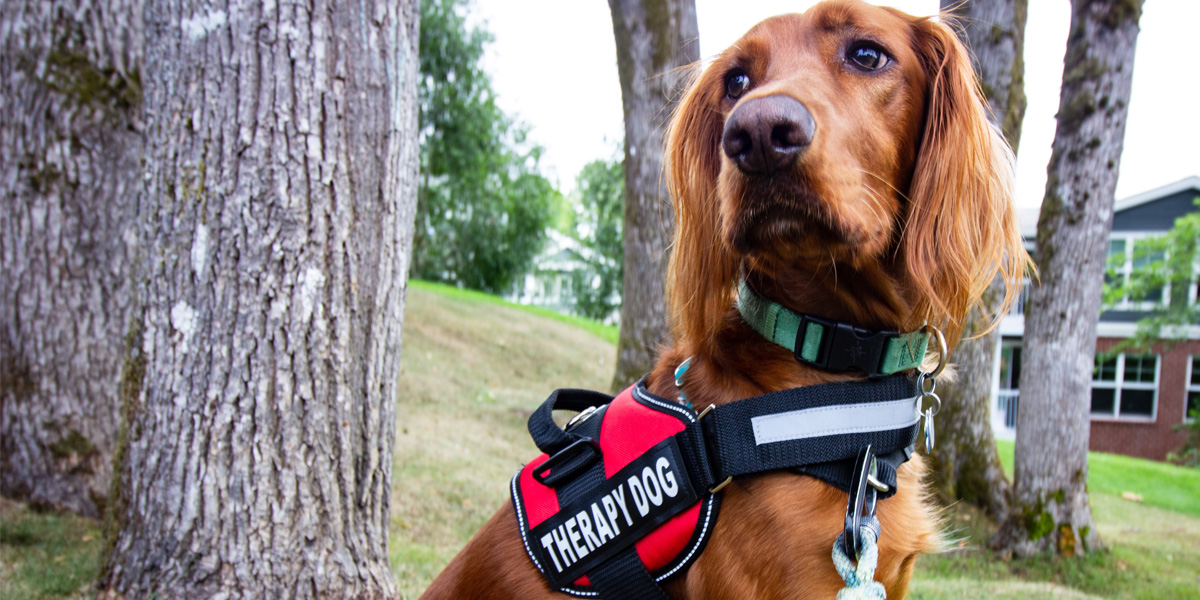How To Volunteer As an Animal-Assisted Therapy Team
Doctor of Veterinary Medicine

While efforts are made to answer all questions as quickly as possible, if an immediate answer is required or if your pet is in need of urgent or emergency care, contact your pet's veterinarian immediately.
Doctor of Veterinary Medicine

You will receive an answer from Dr. Lindsay and our vet/tech team as soon as possible, usually the same day.
All answers are provided for informational or educational purposes only, and are intended to be a supplement to, and not a substitute for, the expertise and professional judgment of your pet's veterinarian.
It may be necessary to consult your pet's veterinarian regarding the applicability of any opinions or recommendations with respect to your pet's symptoms or medical condition.
CloseDoctor of Veterinary Medicine

An error has occurred, please reload the page and try again.
CloseDoctor of Veterinary Medicine

While efforts are made to answer all questions as quickly as possible, if an immediate answer is required or if your pet is in need of urgent or emergency care, contact your pet's veterinarian immediately.
There is no answer related to your question

One of the most fun and rewarding ways to make a difference in your community is to volunteer for animal-assisted therapy work. If you have a cat or dog that brightens your day, enjoys meeting new people, and has plenty of love to go around, they might be the perfect therapy partner.
What is Animal-Assisted Therapy?
Animal-assisted therapy or pet therapy consists of interactive sessions with a trained animal, usually a cat or dog, but it could be any pet that enjoys interacting with strangers and making new friends.
Some examples of places that use animal-assisted therapy are schools, nursing homes, hospitals, correctional facilities, and assisted living facilities.
Simply interacting with an animal has been shown in numerous research studies to lower stress indicators like cortisol levels, blood pressure, and heart rate and increase the beneficial feel-good hormones oxytocin and serotonin. These stress-lowering interactions can help encourage communication skills, promote learning, and alleviate loneliness.
Keep in mind that a therapy pet is permitted in medical and educational facilities during scheduled visits, but does not have other public access rights like a service animal. Like any other pet, a therapy animal cannot enter non-pet-friendly stores or restaurants.
Is Animal-Assisted Therapy Right for My Pet?
Therapy animals are typically dogs, but cats, pigs, rabbits, and even horses can do therapy work. The most important qualifier is that your animal loves people and doesn’t mind changes in their surroundings.
You will have to work with a pet therapy group, usually a nonprofit that makes visits to local facilities. So, your pet will need to not only interact with humans they don’t know, but they will also be around other animals. Also, you’ll be taking them to places like schools, which may have loud, active children, hospitals, with staff, medical equipment, and wheelchairs, so they’ll need to either be tolerant of potential stressors, or they will need to be trained to relax in different surroundings.
No matter how laid-back your pet is, you will need to be their advocate. You will need to set boundaries with students, patients, or residents who may not know how to interact safely with your pet.
Steps To Becoming An Animal-Assisted Therapy Team
Most hospitals, schools, and other facilities will not allow just anyone to visit. You will need to apply to join a local group that arranges visits. You can expect to submit an application, pass an in-person assessment with your pet, and attend trainings and orientations. Most groups have reasonable fees to cover costs like insurance.
Each group has its own set of guidelines that you must follow. Generally, they will need your pet to be fully grown, stable in temperament, and able to understand a few basic commands. Some groups have hygiene and safety guidelines. Your pet will need to be up to date on their vaccinations, may be required to be on a flea and tick preventative, and may be required to have a bath before their visit, especially for trips to medical facilities.
Volunteering with a pet therapy organization makes it easy to schedule visits, keep both your pet and facility residents/students safe, and even make new friends. To get started, apply to an animal-assisted therapy group near you, such as PAWS for People in NJ, DE, MD, and PA, or Pet Partners, which has teams across the United States.
 Swipe
Swipe


















